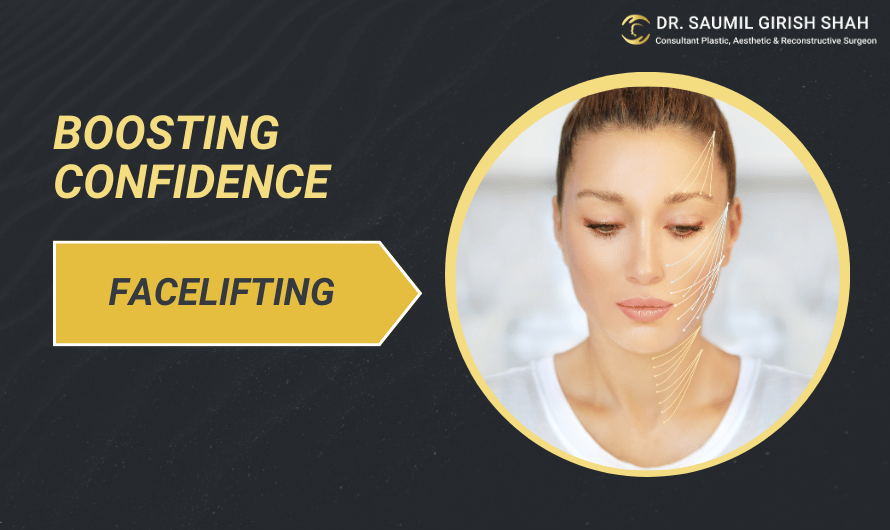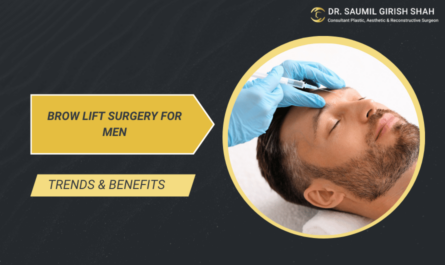A facelift is more than just a cosmetic procedure; it’s an opportunity to restore youthfulness, enhance beauty, and boost self-esteem. In a world where appearance plays a significant role in how we feel about ourselves, a facelift can help individuals regain confidence by addressing visible signs of aging. In this blog, we’ll dive into the basics of facelifting, explore its causes and symptoms, discuss the various treatment options available, and provide expert recommendations to guide you through the process.
Understanding Facelifting
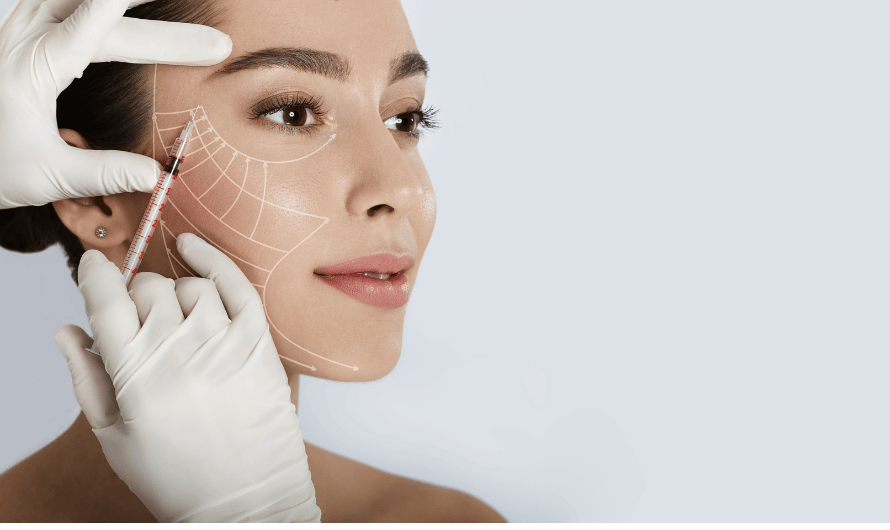
Facelifting, or rhytidectomy, is a surgical procedure designed to reduce visible signs of aging on the face and neck. The procedure involves removing excess skin, tightening underlying tissues, and repositioning facial muscles to restore a more youthful appearance. Facelifts are most commonly sought by individuals in their 40s, 50s, and beyond who notice sagging skin, wrinkles, and deep folds around the face. Explore the reasons behind the growing popularity of facelifts among men, visit blog Why Facelifts Have Become More Popular Among Men to learn more.
Key concepts of a facelift procedure include:
- Facial Rejuvenation: The goal of a facelift is to rejuvenate the face by eliminating sagging skin and wrinkles.
- Skin Tightening: Facelifts aim to lift and tighten the skin, providing a smoother, firmer appearance.
- Facial Contouring: A facelift also improves the contours of the face, including the jawline and neck area, by removing excess skin.
Causes, Symptoms, and Common Concerns
Several factors contribute to the development of sagging skin and wrinkles that may prompt someone to consider a facelift. These include:
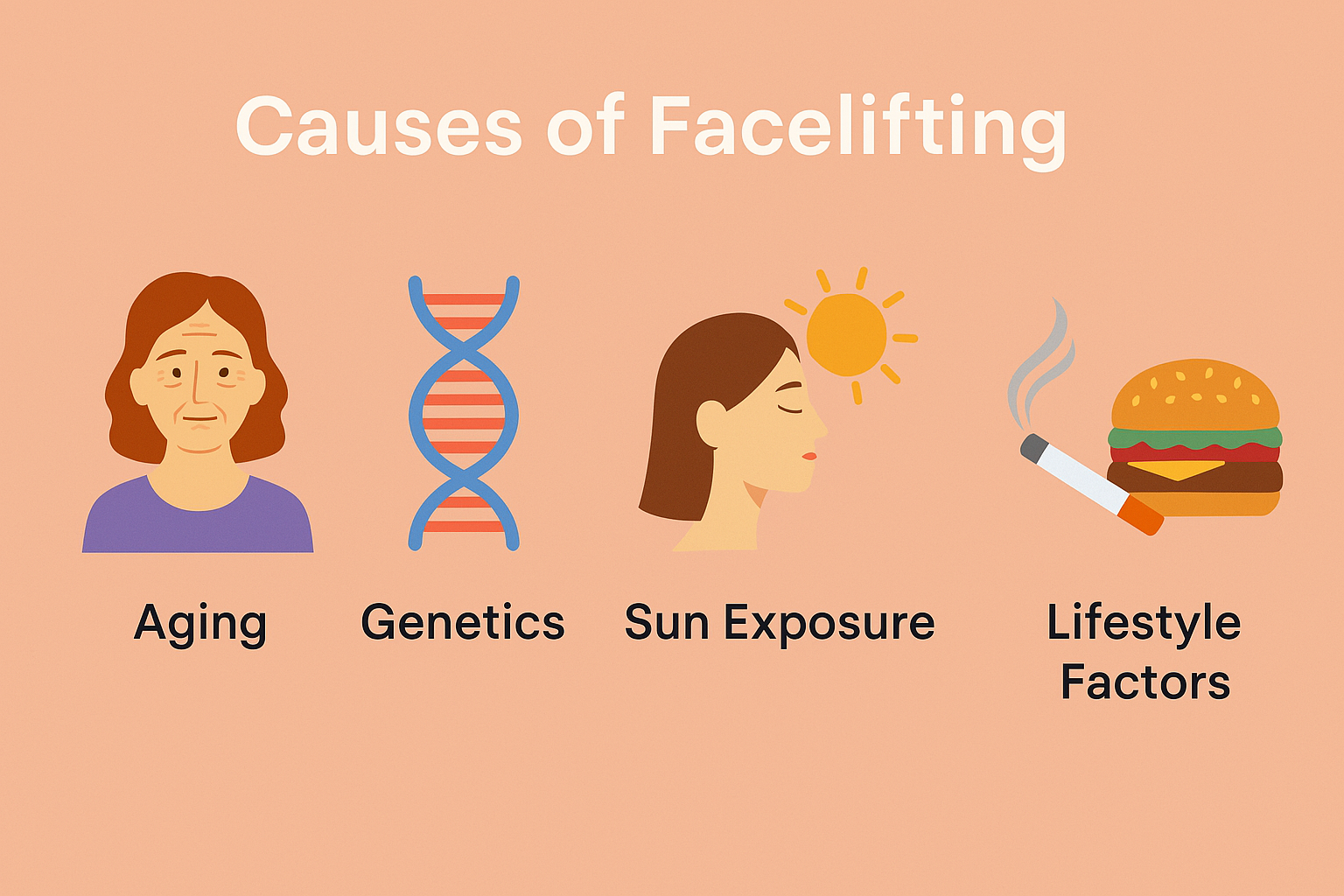
- Aging: The most common reason for facelifting is the natural aging process. As we age, our skin loses elasticity, resulting in sagging skin, deepening wrinkles, and a less defined jawline.
- Genetics: Some people may be genetically predisposed to develop signs of aging earlier than others, causing them to consider facelifting procedures at a younger age.
- Sun Exposure: Excessive exposure to UV rays can damage the skin, leading to premature aging, wrinkles, and sagging.
- Lifestyle Factors: Smoking, poor diet, and lack of proper skincare can accelerate the aging process and make individuals more likely to seek cosmetic treatments.
Common Symptoms and Concerns:
- Sagging Skin: As the skin loses its elasticity, it begins to droop around the eyes, cheeks, and jawline.
- Wrinkles and Fine Lines: Deep wrinkles and fine lines may appear around the mouth, forehead, and eyes.
- Loss of Contour: The face may lose its youthful contour, and the jawline may become less defined.
Treatment Options and Solutions
There are several approaches to facelifting, ranging from non-invasive treatments to surgical procedures. The best option for you depends on your age, skin condition, and personal goals. Here are some of the most common treatments:
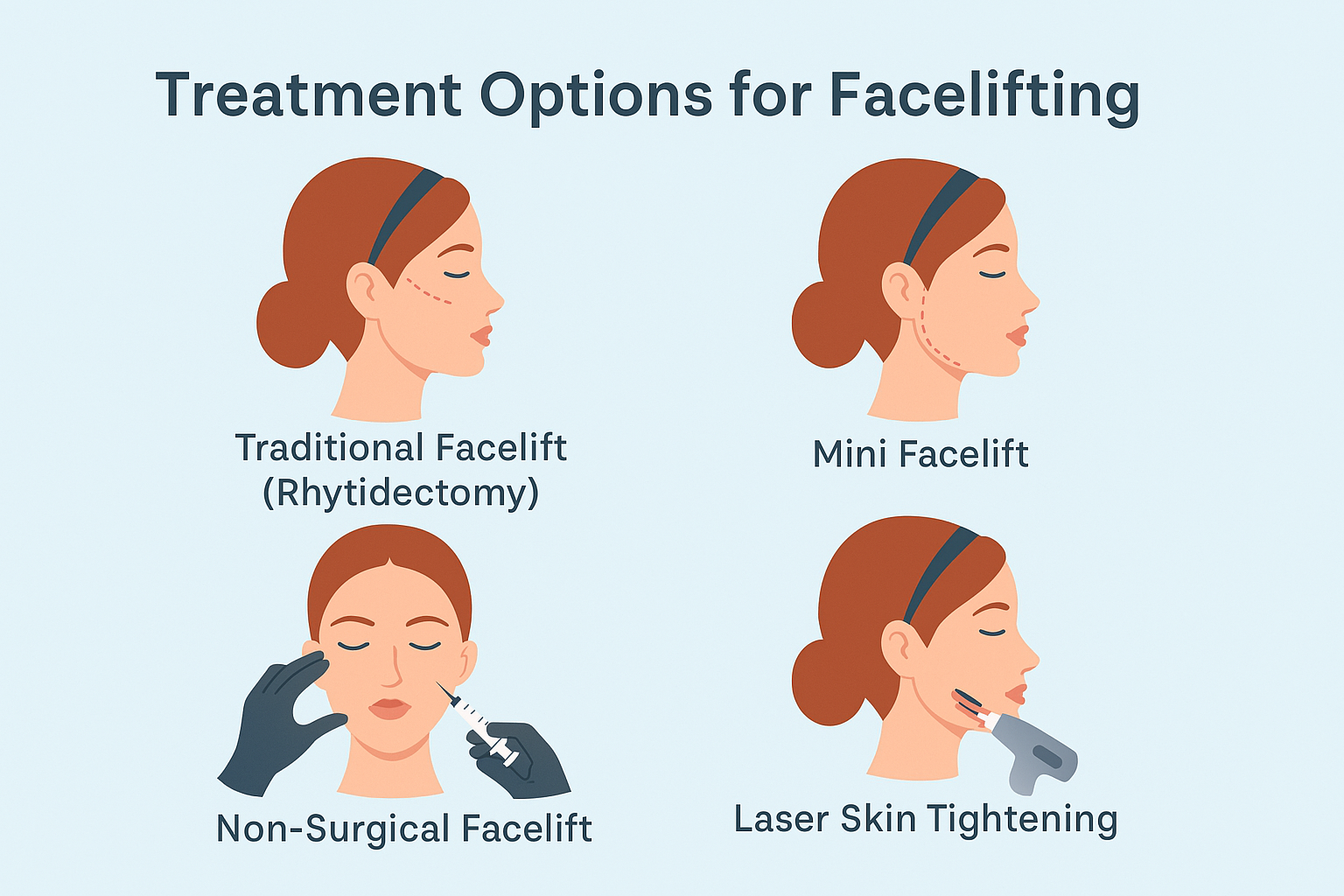
- Traditional Facelift (Rhytidectomy): The traditional facelift involves making incisions along the hairline, around the ears, and sometimes under the chin. The surgeon lifts the skin, tightens the underlying muscles, and removes excess skin to create a smoother, firmer look. This option provides long-lasting results and is ideal for individuals with significant sagging.
- Mini Facelift: A mini facelift is a less invasive version of the traditional facelift. It targets the lower third of the face, focusing on areas like the jawline and cheeks. The recovery time is shorter, and the results are still noticeable, making it an ideal choice for those with mild sagging.
- Non-Surgical Facelift: Non-surgical facelifts use injectables like Botox, fillers, and thread lifts to tighten and lift the skin without the need for surgery. These options are less invasive, offer minimal downtime, and can be a good solution for individuals looking for subtle improvements.
- Laser Skin Tightening: Laser treatments can help tighten the skin by stimulating collagen production. This method is non-invasive and suitable for individuals with mild to moderate signs of aging.
Expert Tips and Recommendations
- Consult a Board-Certified Surgeon: Always seek treatment from a qualified and experienced plastic surgeon who is board-certified. This ensures that you receive the highest standard of care and achieve the best results.
- Consider Non-Surgical Alternatives: If you’re not ready for surgery, explore non-invasive options like Botox or fillers. These treatments can provide subtle yet noticeable improvements without the need for recovery time.
- Follow Post-Op Care: After undergoing a facelift, it’s essential to follow your surgeon’s post-operative instructions to ensure proper healing and maximize results. This includes wearing compression garments, avoiding strenuous activities, and attending follow-up appointments.
Doctor Introduction
Dr. Saumil Girish Shah is recognized as one of the best plastic surgeons in Mumbai, specializing in both aesthetic and reconstructive surgery. Board-certified and extensively trained, Dr. Shah offers a range of surgical and non-surgical procedures aimed at enhancing beauty and confidence. He completed his MBBS at KEM Hospital and pursued General Surgery at M.S. University before receiving advanced training in Plastic Surgery at Sion Hospital, Mumbai. With his expertise in aesthetic surgery, Dr. Shah ensures that patients achieve their desired outcomes, making him a trusted choice for cosmetic enhancements in Mumbai.
Dr. Saumil Girish Shah specializes in male and female procedures for the body, breast, hair, face, laser treatments, and non-surgical options. For consultations, you can visit Skinzone Aesthetics, located at 403, Vini Elegance, Above Tanishq Jewellers, L.T. road, Borivali West, Mumbai 400092. To book an appointment, please contact the clinic directly or visit their website.
FAQs
- How long does a facelift surgery take? A facelift typically takes 2 to 4 hours, depending on the complexity of the procedure.
- What is the recovery time after a facelift? Most patients can return to work within 1 to 2 weeks, though full recovery may take several months.
- Are there risks associated with facelift surgery? Like any surgery, facelifts come with risks such as infection, scarring, and anesthesia complications. However, these risks are rare when performed by a qualified surgeon.
- Will a facelift eliminate all wrinkles? A facelift can significantly reduce wrinkles and sagging skin, but it may not eliminate every fine line. Additional treatments may be necessary for a complete rejuvenation.
- Can non-surgical treatments provide similar results to a facelift? Non-surgical treatments like Botox and fillers can provide subtle lifting and wrinkle reduction, but they do not offer the same long-lasting results as a surgical facelift.
Conclusion
Facelifting offers a powerful solution for individuals seeking to restore their youthful appearance and boost their self-esteem. Whether through surgical or non-surgical methods, the goal of facelifting is to rejuvenate the face and give individuals the confidence to feel their best. If you’re considering a facelift, it’s crucial to consult with an experienced, board-certified surgeon to ensure the best possible outcome. Remember, the right procedure can not only improve your appearance but also positively impact your confidence and quality of life.

